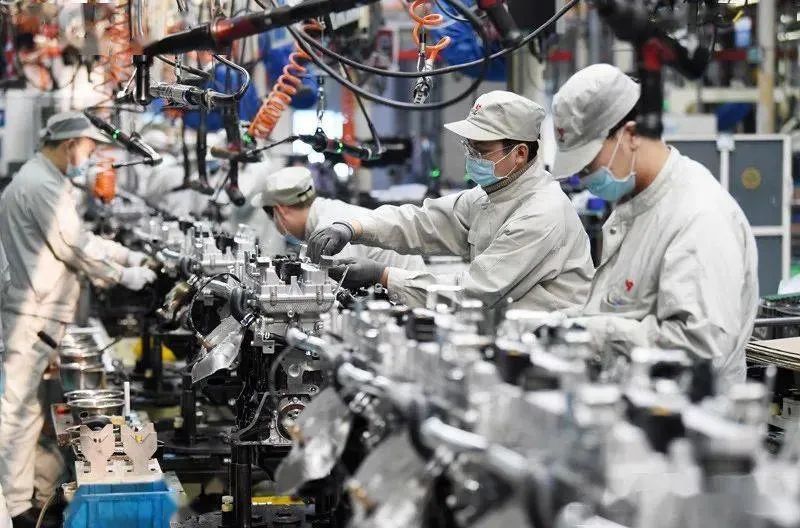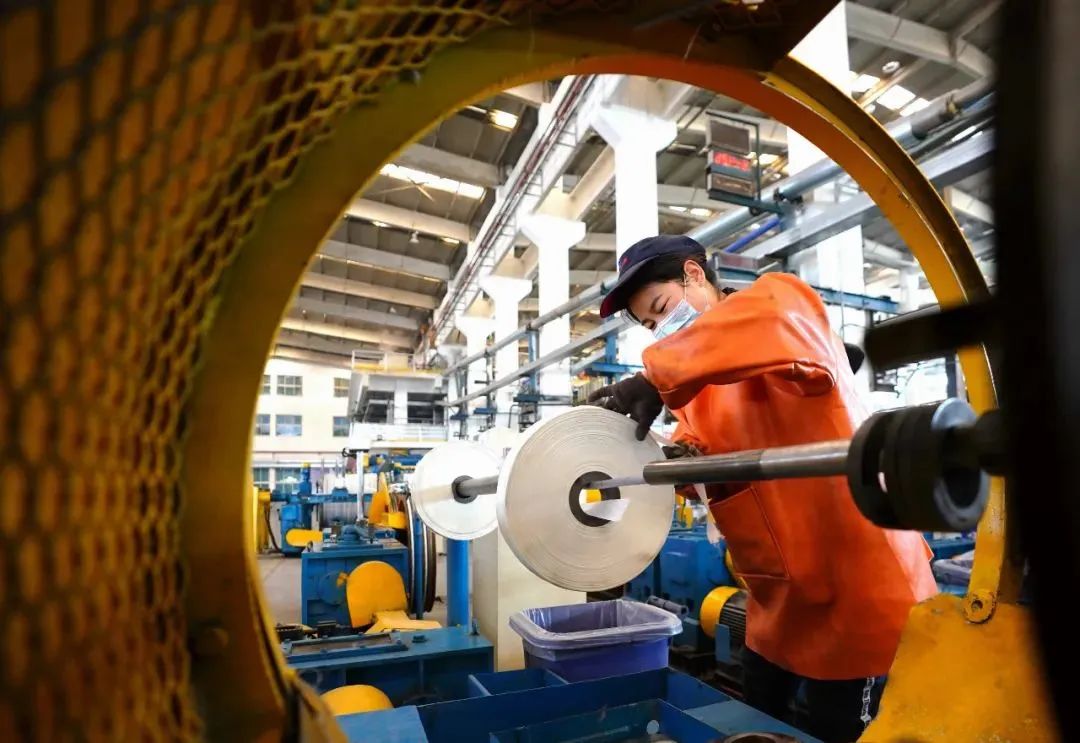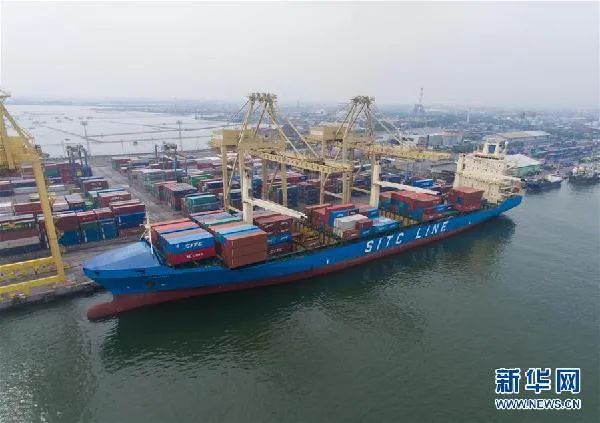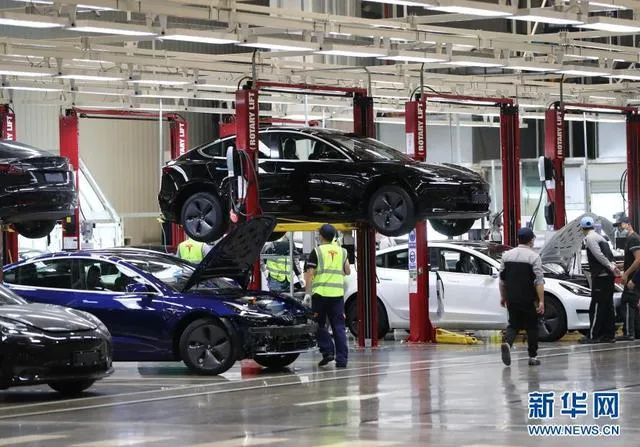"World Factory" transferred to Southeast Asia. Can Vietnam replace China?
Author:China Newspaper Time:2022.06.17

△ Data Map: Harbin Dong'an Automobile Engine Manufacturing Co., Ltd. production workshop, workers are working on production.
At present, the epidemic of new coronary pneumonia is still spreading globally. As a "world factory", China's supply chain and industrial chain continue to face severe tests in the process of this.
At the same time, the rise of the low -end manufacturing industry in Southeast Asia, more and more companies have chosen to move low -end labor -intensive industries from China to Southeast Asian countries. In the first quarter of this year, the news that Vietnam's trade exports exceeded Shenzhen attracted market concerns. Data show that in the first quarter, Vietnam's total exported goods trade was US $ 89.1 billion (about 596.489 billion yuan), an increase of 13.4%year -on -year. During the same period, Shenzhen's export volume was 407.66 billion yuan, a year -on -year decrease of 2.6%.
For a while, discussions such as "Whether Vietnam will replace China into New World Factory" and "Chinese manufacturing will accelerate migration towards Southeast Asia" and other discussions have caused market concerns.
In fact, the topic of the "World Factory" discussed did not appear recently. As early as 2019, when the Sino -US trade situation stalemate, Southeast Asia's replacement effect on China's exports was followed. Since then, the epidemic of new coronary pneumonia has been outbreak, and the global industrial chain has entered a period of reconstruction. The universal consensus from the market is that compared with the impact of the supply chain of the new crown pneumonia, the tariff issue in international trade disputes makes companies feel more stressful.
During the interview, Xu Liping, a researcher at the Asia -Pacific and Global Institute of Strategy of the Chinese Academy of Social Sciences, admitted to the reporter of "China Report" that in recent years, due to the rise in the cost of human and resources, the trend of the low -end manufacturing industry from China to Southeast Asian countries is obviously obvious But for the time being, compared with Southeast Asian countries such as Vietnam, Cambodia, Laos, China's manufacturing industry still has certain advantages and it is difficult to be replaced in the short term.
"World Factory" transferred to Southeast Asia
In 2022, Vietnam, which has a rapid development momentum, is difficult to attract attention. In the data released by the National Bureau of Statistics of Vietnam, as of April this year, Vietnam's total imports and exports exceeded US $ 240 billion. Among them, Vietnamese goods exports were US $ 122.36 billion, a year -on -year increase of 16.4%.
In the view of Wang Huiyao, director of the global think tank, the current eye -catching results are related to the epidemic of new crown pneumonia. In 2021, in order to curb the spread of the new crown pneumonia, the Vietnamese government adopted strict prevention and control measures for some enterprises to stop production and production. The orders of many companies turned to China.
"This year is the opposite direction." Wang Huiyao pointed out to reporters that since this year, Vietnamese enterprises have accelerated the resumption of work and gradually let go of entry restrictions. Because of the repeated epidemic of new coronary pneumonia, domestic logistics and raw materials are difficult to guarantee, and some orders flow to Vietnam and other places.
"But the new crown pneumonia's epidemic is not the root cause of the outflow of orders." Wang Huiyao added. He believes that with the economic development in recent years, China's labor costs have risen and the cost of environmental and transportation has increased. His commercial interests move the industrial chain to a lower -cost area.
The research report of Guohai Securities shows that since the first industrial revolution, it is currently in the fifth round of international industrial transfer, and some of the labor -intensive industries with low added value -added industries have shifted from China to Vietnam and other Southeast Asian countries. Choose the internal and external factors such as industrial transformation and upgrading and international trade protectionism.

△ Data map: Workers work in the production workshop of a cable company in Fengnan District, Tangshan City, Hebei Province.
Many years ago, Xu Liping went to Vietnam, Laos, Cambodia and other Southeast Asian countries to investigate the transfer of industries transfer. He found that although China had a mature industrial chain and a complete supply system at that time, there were still some clothing and light textile fabric companies that moved the production link to Southeast Asia. "Myanmar and Vietnamese workers are very low." Xu Liping still remembers the suspicion of business owners.
It was found that as early as 2012, Adidas closed the only factory in China, and relocating the overall industrial chain to Southeast Asia caused a sensation. This was once regarded as the first signs of China's "manufacturing outflow". Then Nokia, Samsung, Apple, Intel, Philips and other companies also followed.
Xu Liping told the reporter of China News that China's production network has continued to expand in recent years, and the industry has gradually upgraded. In the process, the low -end manufacturing and labor -intensive industries that require labor costs were turned to Southeast Asia. In his opinion, the essence of China's manufacturing industry to Southeast Asia is the "overflow" of domestic supply chains.
"From the perspective of the global industrial chain division of labor, this is a benign 'overflowing'." Xu Liping introduced that industrial transfer is divided into natural transfer in accordance with the laws of market development and human transfer affected by geopolitical factors. Data show that there have been three waves of industrial transfer in the world in the world in the past one or two hundred years. From Britain to the United States, to Japan and South Korea, and then to China, they have shifted from low -end manufacturing.
“产业链的搭建并非一蹴而就的事。”面对市场的不安,包括许利平在内的多位专家都认为,现阶段不应过分解读产业链的外迁,夸大其带来的负面影响,而It should look at the future of China's manufacturing industry dialectically.
The status of China's "World Factory" is difficult to replace
After the reform and opening up, especially after joining the WTO, China's manufacturing industry has increased its share in the world market. In 2001, in the white paper in the Ministry of Nong's Ministry of Health, after the United States, the United Kingdom, and Japan, China was first called the "World Factory". In 2010, the Chinese manufacturing industry accounted for 19.8%of the world's achievements and became the world's first largest manufacturing country. In the past 12 years, China's industrial added value continued to stabilize the world's number one value. The export manufacturing industry in coastal areas has also developed rapidly and expanded in the process, expanding the world's supply chain in various industrial fields.
According to the research report of Guohai Securities, in the context of Sino -US trade friction and fermentation and outbreaks in recent years, the trend of gradually shifting from China to Southeast Asian countries has been clarified. It presents the obvious characteristics of an external economy and is most expected to benefit in the trend of manufacturing.
In Southeast Asian countries, the strong Vietnam was "focusing on". Since January 1, 2022, the "Regional Comprehensive Economic Partnership Agreement" (RCEP) officially took effect and launched, Vietnam has taken this opportunity to usher in a good development prospect. The latest report of the World Bank predicts that Vietnam is expected to become the fastest -growing country in RCEP member states.
At the beginning of April this year, the news that the domestic commercial crocodile Li Jiacheng went to Vietnam to inspect investment projects once again triggered markets. The discussion of "Vietnam will replace the status of China's" World Factory "is becoming increasingly fierce.
During the interview, Xu Liping refuted the "replacement theory". He analyzed the "China Report" reporter that compared with Vietnam, China has a large population, the education level is relatively high, and the industrial structure is relatively complete. Vietnam's infrastructure is relatively backward, with a single industrial structure, and insufficient technology and research and development investment. In Xu Liping's view, the status of China's "world factory" in the short term is difficult to replace.
△ Data Map: Sambo, located in the middle of Java Island, is the main port city in Indonesia.

In the first four months of Vietnam's import and export data, most of the exports brought high growth, while local companies were "performed". Some analysts believe that the current trade in Vietnam is "dependent", and its trade is in the United States' consumer network and produces in China. As far as Vietnam itself is concerned, the ability to build a complete industrial chain is not yet available.
Wang Huiyao, who is cautious and optimistic, expressed her concern about it. He told reporters that although there are many shortcomings in Vietnam and it is difficult to replace the position of China's manufacturing industry in the world, in the long run, Vietnam's policy is open and the demographic dividends are still existing. At the same time, the "industrial chain de -China" of the United States and Europe also provides soil for the rapid rise of Vietnamese manufacturing.
Wang Huiyao pointed out that Vietnam has become a competitive force that cannot be ignored in the rise of China's industrial chain. China needs to prevent the risk of migrating the middle and upstream industrial chain that may bring.
It is worth noting that it is indispensable to become a world factory, hardware facilities and software conditions. In the view of the director of the World Political Research Center of the Foreign Affairs School, if you want to become a new world factory, the first premise is that there must be a complete industrial system, and the heavy industry is one of the key parts.
In an interview with the media, the exhibition pointed out that capital -intensive heavy industries require a large amount of capital to invest a large amount of capital, and the process of relying on the market is not established. He believes that the supply chain session overflows to Southeast Asia, which means that the scale of the supply chain network centered on China has become greater. He infer that in the foreseeable future, the "American Innovation, Chinese Production, Global Sales" pattern will not have a substantial reversal.
Guohai Securities believes that the increasingly prosperous Southeast Asian industrial chain is better than disadvantages to China. According to the research report, in the process, China can enjoy the relatively open policies in Southeast Asian countries, and it can also form an advantage with the current global industrial chain reorganization.
Create a high -precision "World Factory"
Several experts said that China is experiencing the industrial upgrading of "Made in China" to "created by China" to continue to maintain the advantages of manufacturing and stable exports.
In the process, how can China cope with the increasingly severe global trade environment? In this regard, the China -Satellite Think Tank proposed in the "Industrial Power: Made in China" that at present, many low -end manufacturing industries have made a lot of contributions to the local economic development. At the same time, high -end manufacturing has also been an important demand for domestic economic development. In the current context, China should formulate relevant response measures to reduce the outflow of low -end manufacturing caused by international political factors and the protection of high -end manufacturing.
△ Shanghai Tesla Super Factory.

Xu Liping told reporters that maintaining the middle and high -end manufacturing industry in China is China's key task in industrial upgrading. "But you can't get everything." Xu Liping reminded that the manufacturing industry in Southeast Asia and other countries is not a long relationship with the manufacturing industry in China, but to form a model of supporting and systematic development. "In the process of industrial upgrading, China should form a benign development relationship with neighboring countries and establish a favorable surrounding environment. We must not want to do high, middle and low -end manufacturing links." He said.
The reporter noticed that due to the transfer of low -end manufacturing industries to Southeast Asia, the market was worried that China's central and western regions would face employment problems. There have been opinions that reduce the labor costs in the central and western regions of China, so as to undertake some low -end manufacturing industries facing the transfer situation, thereby avoiding unemployment problems in a large population.
Xu Liping believes that the cost of worrying about employment and reducing labor costs itself is separated from industrial upgrading. The transfer of the industrial chain cannot be simply attributed to "people". The central and western regions should "make articles" on themselves, increase the efforts of attracting foreign capital, optimize the business environment, do a good job of undertaking industrial transfer, and cooperate to achieve Made in China. Industry upgrade. At the same time, governments in the central and western regions should also actively encourage entrepreneurship to give people more guarantee and opportunities for people who face employment. "The core is to improve the competitiveness of the manufacturing industry, rather than retaining a large number of low -end manufacturing." Xu Liping for example, improving production efficiency, staffing levels, salary, reducing training costs, etc. middle.
Wang Huiyao also told reporters that in the process of industrial upgrading, China's opportunities are greater than challenges. In his research and judgment, China's manufacturing industry's transformation to digitalization is one of the opportunities. China can use the opportunity of digital transformation to play subjective initiative, increase support for enterprises in China, encourage enterprises to innovate, and avoid becoming a trade island.
"New technologies such as 5G, cloud computing, big data, artificial intelligence and other new technologies to form a technological innovation advantage with its own characteristics." Wang Huiyao further pointed In this way, global capital, talent, technology, etc., eventually upgraded into the "world factory" of global high -precision manufacturing.
Text | "China Report" reporter Qiu Hui
- END -
Look at it!The staged slow payment of social insurance premiums benefited the increase in the industry to 22, and the deadline was also extended!

Recently, the Jiangsu Provincial Department of Human Resources and Social Security...
Zhenkang: Multiple measures and help agriculture to protect food

Entering the busy township of Zhenkang County, the continuous water fields reflect...